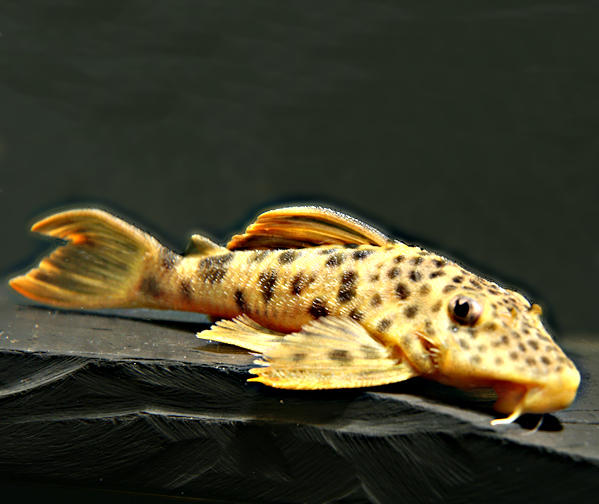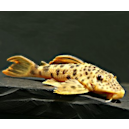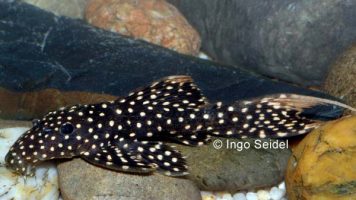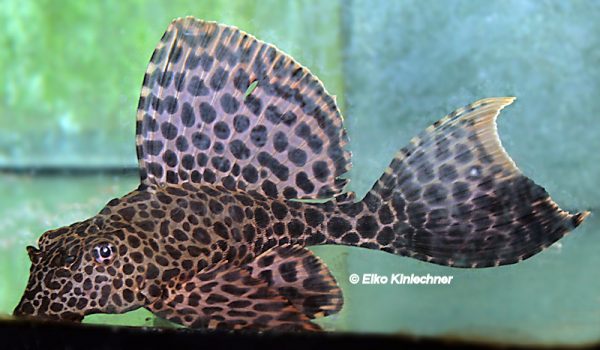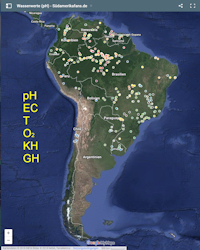How is the assignment from Pterygoplichthys gibbiceps to the L-numbers?
The situation around Pterygoplichthys / Glyptoperichthys gibbiceps
In PlanetCatfish, Pterygoplichthys gibbiceps corresponds to the L-numbers „L 83“ and „L 165“.
In L-WelseCom, Pterygoplichthys gibbiceps has the L-number „L 165“ and Pterygoplichthys xinguensis has „L 83“.
When we look to the other Pterygoplichthys, in much (all?) great rivers of South America there are forms / species more or less similar to Pterygoplichthys gibbiceps. Who is who?
“L 165” is Pterygoplichthys gibbiceps
There are no doubts: Pterygoplichthys gibbiceps and „L 165“ are the same species.
In 1854, Rudolph Kner described Ancistrus gibbiceps in “Die Hypostomiden. Zweite Hauptgruppe der Familie der Panzerfische.” (Denkschriften der Kaiserlichen Akademie der Wissenschaften / Mathematisch-Naturwissenschaftliche Classe.). He used a dried up exemplar. This should be from Rio Negro near Marabitanos. (Accordingly, notes and annotations also from scripts by Humboldt, the position of Marabitanos is approximately 0.93871°N, 66.80989°W near the border to Colombia and Venezuela.)
In 1858, Gill defined the genus Pterygoplichthys. He added Ancistrus gibbiceps to this new genus.
In 1991, Claude Weber established the genus Glyptoperichthys and added this specie.
In connection with the genus Liposarcus, Günther 1864, today we see the kinship relations critically. Therefore, the last two genera are synonyms of Pterygoplichthys.
Rainer Stawikowski reported an import of a catfish species by the company Transfish, Munich in the magazin DATZ 6/1994. Rainer Stawikowski gave this species the L-number “L 165” and noted that this species correspondens to the description of Pterygoplichthys / Glyptoperichthys gibbiceps. The exact fishing location is unknown. Due to the location of Manaus but one can assume that the imported animals come from the Rio Negro.
Forms / species that are the same or similar to Pterygoplichthys gibbiceps
At first, we look from the Rio Negro to north:
We can found these catfishes almost in the entire Río Orinoco basin. The Río Orinoco is obviously not a habitat border. Therfore, we can assume that these are the same species.
If we look from Rio Negro to south there is another image. Today, it looks like that the Amazonas / Rio Solimões seems to be a habitat border. In each greater river basin there lives moste likely one or more species / forms more or less similar to Pterygoplichthys gibbiceps. They also differ quite clearly.
Also, on our tour along the Rio Solimões I was able to discover only a single specimen of or similar to Pterygoplichthys gibbiceps by fishermen and on fish markets. I found this on the fish market of Manaus. Along the Rio Solimões Pterygoplichthys pardalis occurs exclusively in relation to the tribe Pterygoplichthini.
Pterygoplichthys / Glyptoperichthys gibbiceps seem to be live more away from the main stream.
Other known species / forms similar to Pterygoplichthys / Glyptoperichthys gibbiceps are:
- Pterygoplichthys cf. gibbiceps (L 83) from Rio Xingu
- Pterygoplichthys cf. gibbiceps (L 164) from Rio Tefé
- Pterygoplichthys cf. gibbiceps (L 347) from Rio do Para,
- Pterygoplichthys cf. gibbiceps (L 472) fron Bolivia (Río Paragua, Laguna Bay, Río Blanco, …),
Whether these are one species with many forms or more species, must show scientific research.
(All entries in the database to Pterygoplichthys (cf.) gibbiceps.)
“L 83” = Pterygoplichthys xinguensis?
We know „L 83“ as Pterygoplichthys from Rio Xingu. It’s very similar to Pterygoplichthys gibbiceps. The important difference is that the lines between the dark points/spots are less round and looks more like wormlines. “L 165” has a pattern like honeycombs and “L 83” more like a net.
In 1991, Claude Weber describted Glyptoperichthys xinguensis (Pterygoplichthys xinguensis) foom Rio Fresco near the village Aldeio Gorotire, in the Rio Xingu basin in “Nouveaux taxa dans Pterygoplichthys sensu lato (Pisces,Siluriformes, Loricariidae)” (Revue Suisse de Zoologie, Vol. 98). There we can read: „G. xinguensis se distingue par une livrée sombre à petits points clairs sur tout le corps et les nageoires, …“ (Glyptoperichthys xinguensis is characterized by a dark coloration with small luminous points on the whole body and fins, …).
Also Jonathan W. Armbruster & Lawrence M. Page wrote in “Redescription of Pterygoplichthys punctatus and description of a new species of Pterygoplichthys (Siluriformes: Loricariidae)” (Neotropical Ichthyology, Vol. 4 No. 4) about Pterygoplichthys xinguensis and Pterygoplichthys gibbiceps.
Both species are compared directly in the key:
- „large, dark spots“ imply Pterygoplichthys gibbiceps and
- „light spots“ imply Pterygoplichthys xinguensis
Does “L 83” have big black or (normal) light spots?
We look to the known pictures of Pterygoplichthys xinguensis
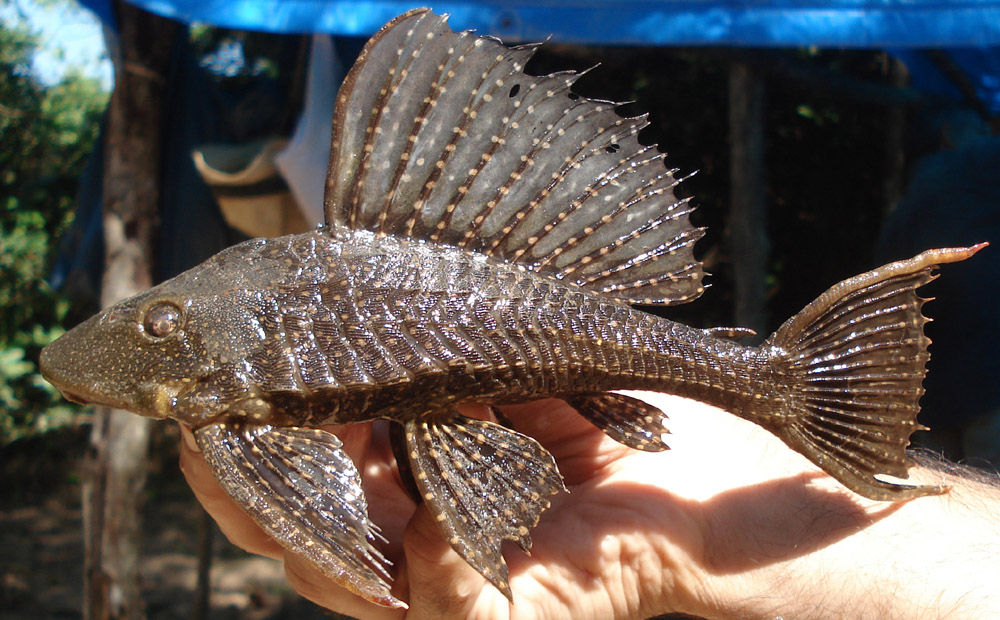
Photo: José Birindelli (CC BY-NC)
or in PlanetCatfish.
There are light spots, but no big dark spots.
Both pictures are almost full-grown animals. Does “L 83” correspondend to young Pterygoplichthys xinguensis?
I think, no. We can find a lot of pictures from „L 83“ where the animals have a size greater than 20 cm.
The lines of honeycombs / net make no attempt to rip. Claude Weber used an
Pterygoplichthys xinguensis with a standard length of 29 cm as holotype. The paratype has a standard length of 26 cm. Since the honeycombs / net have been completely gone? That is very unlikely.
Therefore, I think that “L 83” is a form from ( or a species very similar to) Pterygoplichthys gibbiceps, but it is not Pterygoplichthys xinguensis.
Futhermore, we can find Pterygoplichthys cf. gibbiceps (L 83) on the positive list of Brazil. It’s allowed for export. On the other site Pterygoplichthys xinguensis is not in this list, it’s not allowed for export.
